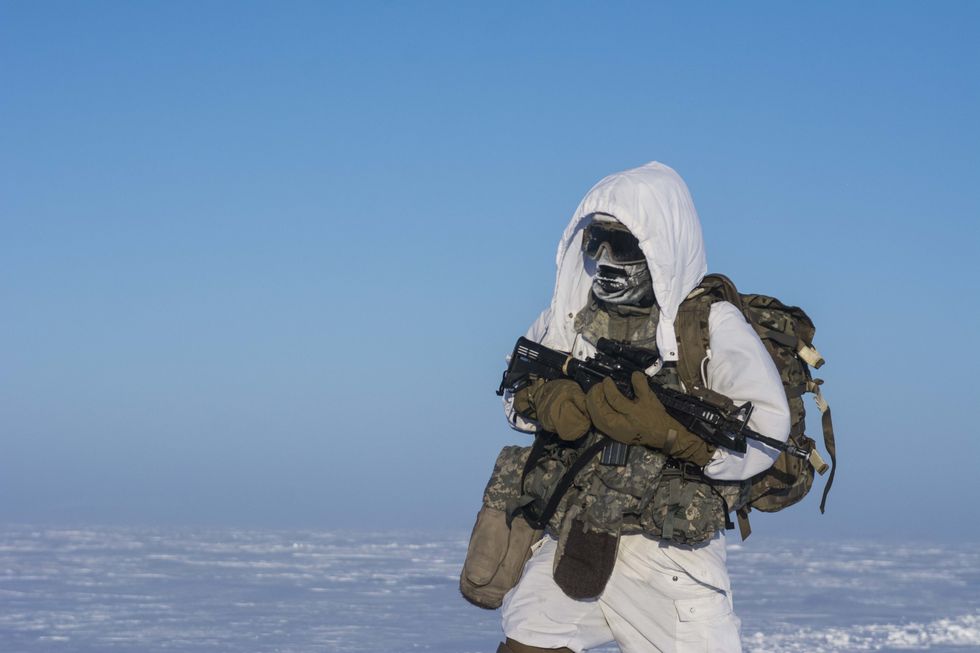Deadhorse, Alaska is one of the most isolated places in America. Just eight miles from Prudhoe Bay and the Arctic Ocean, Deadhorse has fewer than 50 residents—a number that instantly tripled on February 22, when 128 paratroopers of the U.S. Army dropped from U.S. Air Force transports into the bleak polar landscape.
The training exercise, dubbed Spartan Pegasus 2017, involved the simulated recovery of a downed satellite. Airborne scouts from the Alaska-based 1st Squadron, 40th Cavalry Regiment and 1st Squadron, 25th Cavalry dropped from U.S. Air Force C-17 Globemaster III transport planes into minus-35 degrees Fahrenheit weather.
Incidentally, the satellite scenario isn't all that far-fetched: in 1978 Kosmos 954, a nuclear-powered Soviet spy satellite, crashed in the Canadian Arctic and a Joint Canadian-American team was tasked to retrieve the radioactive debris.
The Arctic region is taking on increased geopolitical and economic importance as the Earth continues to warm up as a result of climate. A decline in Arctic sea ice means a new ice-free shipping route connecting the Northern Hemisphere is likely. It also means that previously unavailable resources could soon be in reach. The Department of Energy estimates 90 billion barrels of oil lie in wait under the Arctic. That's enough to keep human civilization chugging along for 2.5 years. The DoE also estimates the Arctic holds 30 percent of the world's undiscovered natural gas.
Other countries are showing newfound interest in the Arctic. Russia is beginning to resurrect a series of military bases in the region, which is worrying because the country has laid claim a large part of the Arctic including the North Pole. The U.S. has responded by conducting several high profile exercises in the region, including ICEX 2016, which saw U.S. Army soldiers linking up with a pair of U.S. Navy nuclear submarines that pushed through the sea ice.

Kyle Mizokami is a writer on defense and security issues and has been at Popular Mechanics since 2015. If it involves explosions or projectiles, he's generally in favor of it. Kyle’s articles have appeared at The Daily Beast, U.S. Naval Institute News, The Diplomat, Foreign Policy, Combat Aircraft Monthly, VICE News, and others. He lives in San Francisco.













